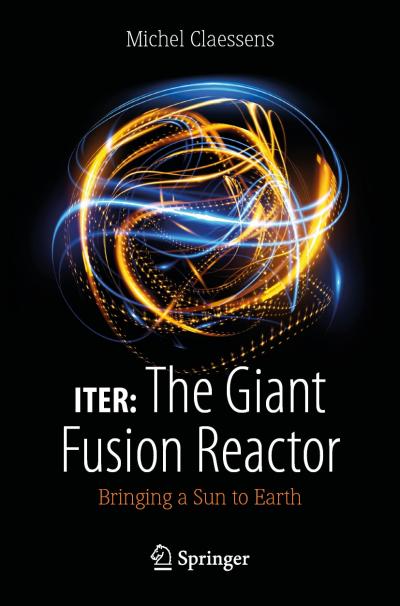A new book provides a behind-the-scenes view into ITER — the world’s biggest fusion reactor, and discusses the challenges and opportunities of this potentially limitless green energy source

Credit: Springer Nature
Most of the energy we consume is provided by fossil fuels like oil, natural gas and coal, which are major contributors to our current climate crisis. As the demand for energy continues to grow in almost every country in the world, we urgently need to find new power sources that are safe and environmentally friendly. Could hydrogen fusion be the answer? In his new book, ITER: The Giant Fusion Reactor, Michel Claessens provides a snapshot of the world’s largest fusion reactor: the International Thermonuclear Experimental Reactor (ITER), which is situated in southern France.
Claessens has followed the development of the reactor from inception to present day and is ideally placed to describe what the ITER programme has accomplished so far, as well as its drawbacks and issues. In the first four chapters of the book, Claessens describes the science and technology behind a fusion reactor, which many people confuse with nuclear fission. In fact, nuclear fusion is the reaction that naturally occurs in our Sun and stars and involves heating hydrogen nuclei to extremely high temperatures so that they can fuse and create energy. The chapters following the scientific explanation of this technology explore the historical, political, economic and philosophical aspects of organizing a huge collaborative project. For example, Claessens discusses the difficulties of managing this multifaceted project involving participants from the seven members: China, the EU, India, Japan, Korea, Russia and the US (and 35 countries in total). He also explores funding issues and differences in political and scientific will.
“What is ITER in the end? A revolutionary program likely to save our civilization or yet another expensive project aimed at impressing politicians and industrialists?” asks Claessens. He concludes that at least one point is unanimous: since its launch, the project has triggered a lot of controversy.
ITER: The Giant Fusion Reactor is an enjoyable read for anyone interested in energy research and policy, and the organization of large, multilateral research projects. This book can be read from cover to cover all the way through, but its highly accessible style and logical structure also allow readers to dip in and out of sections as they wish.
###
About the author
Michel Claessens is a scientist and essayist who has devoted more than 20 years of his career to examining the relationship between science and society. His background is physical chemistry and science journalism and he served as head of communications and external relations of the ITER project from 2011 to 2016. He is now in charge of ITER policy and communication in European Commission’s Directorate-General for Energy. Claessens also teaches at the Free University of Brussels and has published numerous books and essays.
Claessens, Michel
ITER: The Giant Fusion Reactor
2020, 216 p. 22 illus.
Softcover €21.99 | £15.00 | $19.99
ISBN 978-3-030-27580-8
eBook ISBN 978-3-030-27581-5
Media Contact
Elizabeth Hawkins
[email protected]
49-622-148-78130
Original Source
https:/





